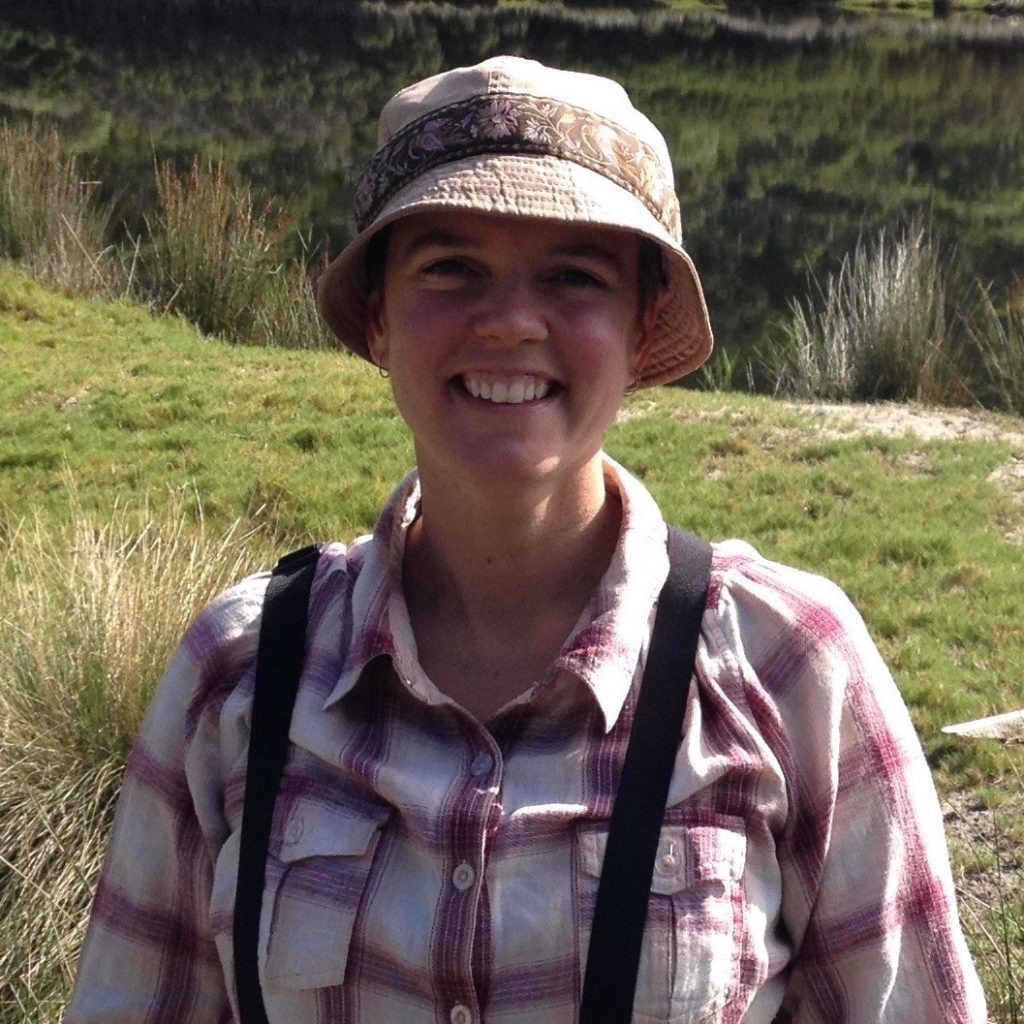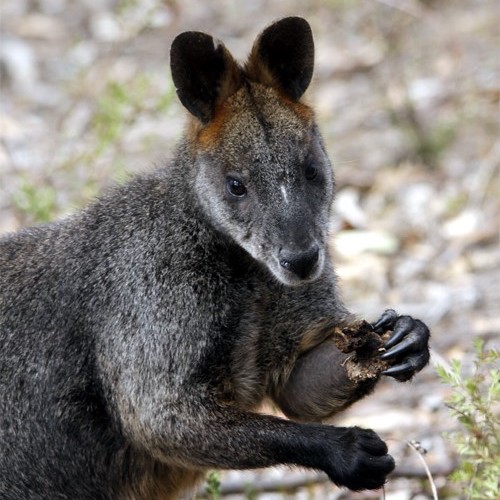June 22nd, 2020Nature Diary with Tanya Loos
IT REALLY is a wonderful fungi season in central Victoria – both the Wombat State Forest and drier forests to the north are filled with an everchanging array of spectacular forms. This bounty represents the fruiting bodies of these organisms – and they also provide food for the forest inhabitants.
Much is known about the consumption of underground truffle-like fungi by small marsupials such as potoroos, bettongs and mammals such as bush rats. But the large external fungi popping up are munched upon by bigger mammals – the swamp wallabies.
The image, pictured right and taken by Geoff Park, captures a wallaby in the act, holding a mushroom in his or her front paw, much like we would munch on an apple.
Very little is known about the consumption of fungi by swamp wallabies. At the encouragement of Tom May, senior research scientist (mycology) for the Royal Botanic Gardens Victoria, Glenlyon resident Gayle Osborne has set up motion capture cameras to document this behaviour.
It is a tricky business, as it also involves the correct identification of the fungi – which can be difficult if the wallaby has consumed most of the specimen. Gayle must identify the fungi first, via photos and spore prints, often with the help of fungi-literate folks like Malmsbury naturalist John Walters. The camera is set up at an appropriate spot. And then wait – sometimes it is over a week before the fungi is eaten.
Although initially counter-intuitive, there is an advantage of being eaten by mammals such as swamp wallabies and possums. Like the smaller truffle species, large fungi are dispersed by spores, and these spores pass through the animal’s gut, to be spread widely, for the benefit of other animals, and of course the health of the forest.

So how do they taste? And are some of them poisonous?
Gayle writes: “Some of the fungi that were observed to be eaten taste very bitter for humans, especially armillaria luteobubalina and gymnopilus junonius.
“Other fungi belong to groups, which contain some toxic species, as is the case for Cortinarius, a few species of which are poisonous to humans as they contain the toxin orellanine, which can lead to kidney failure.
“Fungi that are unpalatable or toxic for humans may not have the same effects on animals.” ( June 2020 Wombat Forestcare Newsletter)
I am very curious as we have small numbers of the red and white fly agaric mushrooms (amanita muscaria) which grow near our oak trees. And each year they are munched enthusiastically – the huge caps consumed entirely with only the stems remaining. These mushrooms can make humans feel quite very sick, and very strange – and I wonder if wallabies are affected in the same way? Or if they are impervious to these effects?
My searches online have revealed nothing, except that swamp wallabies in Tasmania have reportedly been very much affected by the legal opium poppy fields down there. If anyone has seen their wallabies acting strangely this mushroom season, do get in touch via my blog! https://tanyaloos.com/
With thanks to Gayle Osborne, Wombat Forestcare, and Geoff Park for the fantastic photo.
PS. The state government was supposed to respond to the Victorian Environmental Assessment Council’s final recommendations to protect almost 60,000 hectares of central west forests in new national parks within six months.
The announcement should have been made by the end of February of this year.
The forests worthy of protection as national parks include the Wombat State Forest (near Daylesford), Wellsford Forest (near Bendigo), Pyrenees Ranges Forest (near Avoca), and Mount Cole Forest (near Beaufort).
Wombat Forestcare is asking concerned people to contact Mary-Anne Thomas and the minister to voice their concerns. http://www.wombatforestcare.org.au/
Tanya Loos is a keen field naturalist who spends a lot of time wandering around the bush in our beautiful region. She loves writing about nature and science – she blogs at https://tanyaloos.wordpress.com/










